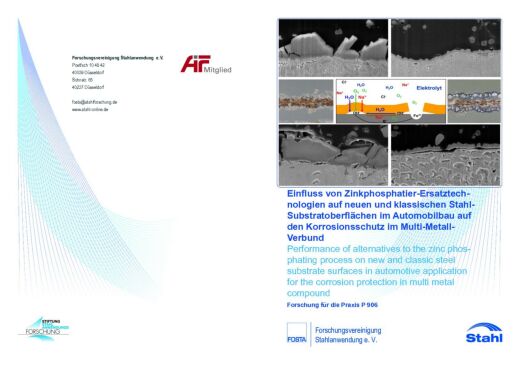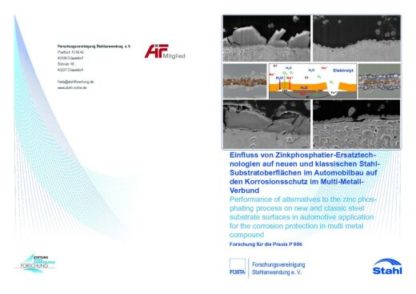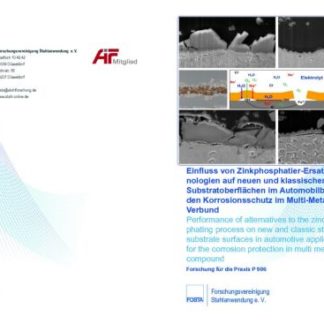Description
P 906 – Performance of alternatives to the zinc phosphating process on new and classic steel substrate surfaces in automotive application for the corrosion protection in multi metal compound
Multi metal substrate materials become more and more important in automotive application. Besides conventional materials as steel and galvanized steel new materials as aluminum and steel with zinc magnesium platings are used. This new mix of materials challenges the established zinc phosphating process. For corrosion protection of steel and galvanized steel the trication zinc phosphating process is state of the art, but for new materials corrosion protection is insufficient in some cases. Another argument for the development of alternatives to zinc phosphating process is the toxicity of the used nickel salts. Therefore the search for alternative thin layer pretreatments (TLP) is intensified. For this the knowledge about the performance of corrosion protection of these new technologies has to be broadened.
In this project relevant factors influencing corrosion were investigated in phenomenological studies and with scientific methods. The corrosion processes on standard and new substrate materials (steel, galvanized steel, steel with Zn-Mg layer, aluminum …) in combination with TLP in comparison to zinc phosphating process were tested and evaluated. The different pretreated substrates were coated with electro dipping paint (EDP) which is typically used in automotive application. The study gives a ranking of the systems regarding corrosion protection and gets insights in the relevant corrosion processes.
One aim of the investigations was to determine the factors which mainly influence the corrosion protection of the different systems. It is evident that there is no simple description of the complex interaction of all three components: substrate-pretreatment-EDP. The new pretreatment processes (TLP) are robust: various substrate materials as multi metal structures can be pretreated together and then coated with EDP. The corrosion protection strongly depends on the combination of the chosen materials. Expositions to alkali and chloride ions seem to have the strongest influence on corrosion protection of TLP. The higher sensitivity towards alkaline loads results in stronger cathodic delamination of the EDP during corrosion protection testing. The investigation of the interfaces shows that penetrating media and corrosion products accumulate in the interfaces between substrate and pretreatment layer and pretreatment and EDP.
The results give that some established corrosion tests were specially developed for the benchmark zinc phosphate. The results for other systems are not reliable reproducible for the systems with new pretreatments in round robin. The “new” cyclic corrosion test VDA 233-102 – even prolonged – could not differentiate between the applied pretreatments on substrates having an intrinsic corrosion resistance like aluminum or zinc plated steel. A possible opportunity for reliable testing and evaluation of new substrate-pretreatment systems can be electrochemical investigations with polarization and cyclovoltammetry.
The investigations show that in mild corrosive environment the systems with TLP on galvanized steel, steel with Zn-Mg layer and aluminum the performance is as good as the performance with zinc phosphate. Therfore the new systems are suitable for the application with mild corrosive load. With high corrosive load only few systems with TLP have a comparable corrosion protection performance as the systems with zinc phosphate. The results of the tested systems cannot be generalized for other systems. Before implementation the user has to check each system according the requirements and decide if the system with thin layer pretreatment is suitable for his application.
Only available in german language.
Published in:
December 2016
Authors:
C. Bauder, U. Christ, R. Nothhelfer-Richter
FOSTA – Research Association for Steel Application




